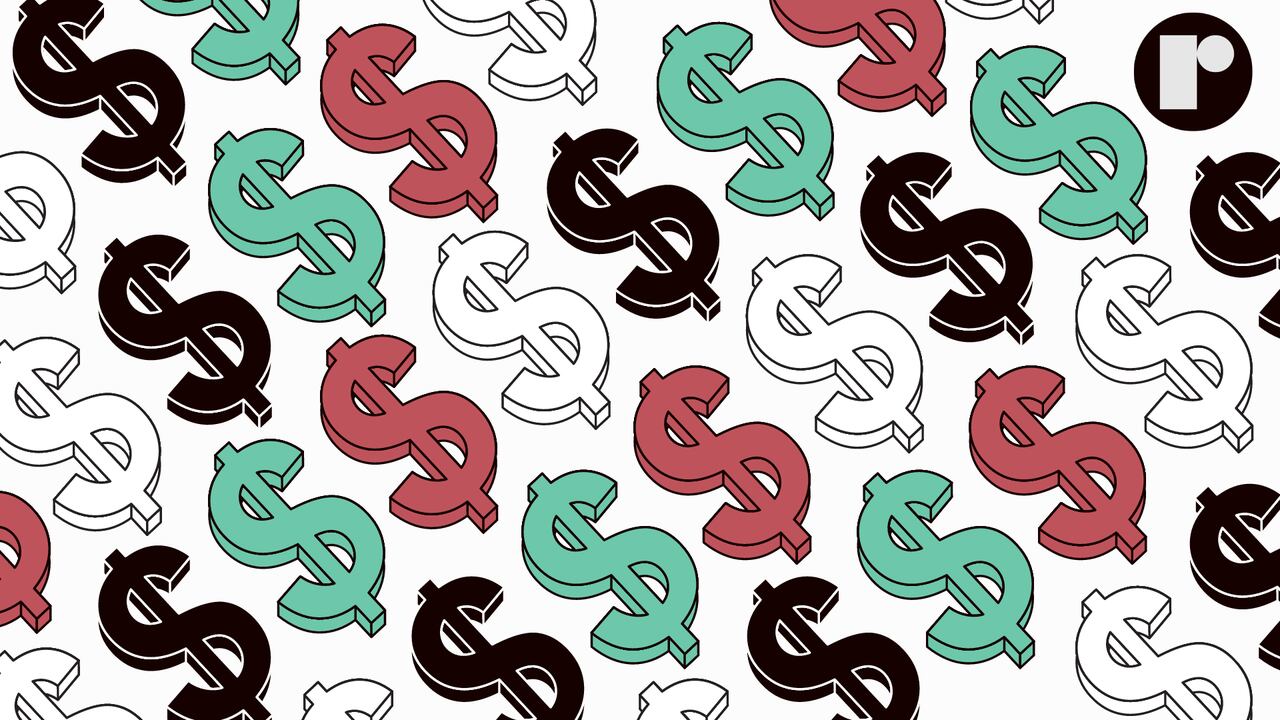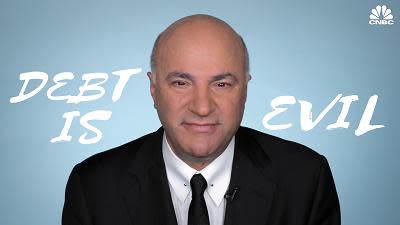Biggest Source of Debt for Millennials Isn’t Student Loans: Myths Busted!

The biggest source of debt for millennials is not student loans; it’s actually credit card debt. Surprising to some, this financial challenge overshadows educational debts.
Millennials face a unique financial landscape that has shifted the debt focus from student loans to credit card obligations. Growing up during economic upheavals and technological advancements, this generation encounters varying financial pressures. High living costs, coupled with the temptation and accessibility of credit, have propelled credit card debt to the forefront of their monetary burdens.
As a consequence, many millennials struggle to navigate the complexities of financial planning, often prioritizing immediate needs or wants without fully considering long-term repercussions. This trend reflects broader cultural shifts toward consumption and immediate gratification, posing significant obstacles to achieving financial stability. Understanding these dynamics is crucial for financial institutions, policymakers, and individuals aiming to support millennials in managing debt more effectively.
Millennial Debt Landscape
Welcome to the Millennial Debt Landscape, a topic that stirs much debate and assumptions. As we unpack the financial burdens of this generation, the script flips on what many believe to be their biggest source of debt.
Common Misconceptions About Millennial Debt
It’s often proclaimed that student loans are the millennial’s heaviest weight. Cultural narratives paint a picture of a generation shackled by education-related financing. Yet, a closer look reveals a more complex debt tapestry, woven with various threads beyond just student loans.
- Credit card misuse is frequently understated.
- Many overlook the impact of auto loans.
- Mortgages, a historically ‘good debt’, emerge as a new burden.
- The rise of personal loans for self-investment or consolidation.
Real Statistics: What The Numbers Say
Real-world data paints a surprising picture of millennial debt. The facts tell a story that diverges from popular belief.
| Type of Debt | Percentage |
|---|---|
| Credit Card | 25% |
| Student Loan | 17% |
| Auto Loan | 14% |
| Mortgage | 36% |
| Personal Loan | 8% |
This breakdown challenges the stereotype of the millennial debtor. Credit card debt claims the top spot. Student loans, while significant, don’t dominate as the singular debt source. Auto loans, mortgages, and personal loans collectively cast a wider net over the financial reality for many young adults.
Beyond Student Loans
Debt for millennials stretches far beyond student loans. Many believe education debt is the peak. Yet, recent trends tell another story. Two other types of debt challenge this belief. Credit cards and mortgages are becoming prominent burdens. Let’s dig into these rising debts.
Credit Card Debts Taking The Lead
Surprisingly, credit card use is overtaking student loans for millennials. Shopping and high costs of living push credit card use higher. Millennials often use cards for basic needs. This leads to mounting credit card debt.
- Rising Expenses: Daily costs push credit card reliance.
- Immediate Needs: Cards cover urgent life essentials.
- Compulsive Shopping: Online buying sprees add to the debt pile.
Monthly payments and interest rates escalate these debts. Paying just the minimum digs a deeper hole. Credit card debts quickly overshadow student loans.
Mortgages: A Growing Burden For Millennials
Homeownership dreams spawn millennial mortgage debt. With real estate prices soaring, mortgage balances grow. Getting onto the property ladder is costly.
| Year | Average Mortgage Debt |
|---|---|
| 2020 | $215,000 |
| 2021 | $230,000 |
| 2022 | $245,000 |
Mortgages for millennials mean more than a debt number. They affect lifestyle choices, career paths, and family planning. The burden of securing a home loan weighs heavy.
- Down Payment Hurdles: Saving enough for a home down payment.
- Interest Rates: Rates vary and can increase the overall debt.
- Long-Term Commitment: Mortgages tie millennials down financially for decades.
Lifestyle Influences On Financial Stability
The idea that student loans are the primary source of debt for millennials is finding competition from lifestyle choices. Exploring how daily living costs and social media influence spending is crucial for understanding financial stability within this age group.
The Impact Of Living Costs
Living expenses hold a significant weight in the balance of millennial finances. A closer look at these costs reveals:
- Rent: High housing prices strain budgets.
- Utilities: Monthly bills such as electricity and water add up.
- Groceries: Food expenses continue to rise.
These basic costs dictate budget allocations and influence savings potential. As young adults navigate through these challenges, the ability to manage these expenses becomes a key factor in their financial health.
Social Media And Consumer Behavior
Social platforms steer millennials towards certain spending habits. The phenomenon includes:
| Area | Influence |
|---|---|
| Trends | Users chase the latest products featured online. |
| Lifestyle Showcases | Inspiration from influencers encourages higher spending. |
| Marketing | Targeted ads push impulse buys. |
As young consumers engage with these platforms, they face pressure to spend on non-essentials. This can lead to debt that rivals or even overshadows student loans.

Credit: finance.yahoo.com
Employment Challenges
Employment Challenges play a significant role in the financial health of millennials. Contrary to popular belief, student loans are not their only burden. Job market complications, including wage stagnation and the rise of the gig economy, contribute heavily to their debt load. These issues present a daunting picture for the financial security of a generation. Let’s delve into how these employment challenges affect millennials.
Wage Stagnation Vs. Rising Living Expenses
The balance between earnings and spending is crucial for financial well-being. Unfortunately, for many millennials, wages have barely budged over the years. This lack of growth fails to keep up with the steep increase in living costs, from rent to healthcare. The data paints a clear picture:
| Year | Average Wage Increase | Average Living Expense Increase |
|---|---|---|
| 2010 | 1.5% | 2.3% |
| 2015 | 2.0% | 2.9% |
| 2020 | 2.5% | 3.8% |
Millennials struggle as their paychecks remain flat while bills pile up.
The Gig Economy And Financial Uncertainty
The gig economy has reshaped the employment landscape. Jobs often come without traditional benefits like health insurance or retirement plans. Here’s what this means for millennials:
- Inconsistent income makes budgeting a challenge.
- No job security often leads to chronic financial stress.
- Lack of benefits forces many to out-of-pocket spending on healthcare and savings.
These factors combine to create a precarious financial situation for those reliant on the gig economy.
Strategies To Overcome Debt
The assumption that student loans are the pinnacle of millennial debt is quickly becoming a myth. Millennials face a plethora of financial challenges, which often culminate in significant debt. Yet, this does not spell doom and gloom for the ambitious generation. Adopting strategic measures can turn the tide on debt accumulation, bringing newfound financial freedom. Embarking on a debt-overcoming journey calls for understanding smart budgeting, and exploring debt consolidation and refinancing options.
Smart Budgeting TipsSmart Budgeting Tips
Outlining a budget serves as a financial compass. It requires identifying income sources, tracking spending, and setting realistic saving goals. The key lies in distinguishing needs from wants. Prioritizing essential expenses ensures monthly obligations are met without fail.
Tips List- Track all expenses with budgeting apps
- Allocate funds to savings immediately upon receiving income
- Review and adjust budgets monthly for improved efficiency
- Reduce discretionary spending in areas like dining out and entertainment
Debt Consolidation And Refinancing Options
Debt consolidation combines multiple debts into a single loan, potentially with lower interest rates and monthly payments. Refinancing involves replacing an existing loan with a new one, often at a lower interest rate. Both strategies can streamline finances and accelerate the debt repayment process.
Refinancing Benefits Table| Strategy | Benefits | Considerations |
|---|---|---|
| Debt Consolidation | Simplifies repayment, lower interest rates | Must have good credit, fees may apply |
| Refinancing | Potentially lower payments, interest savings | Qualification requirements, potential for longer term |
Select debt consolidation loans or refinance options that align with financial objectives. Always compare lender terms to ensure the most beneficial arrangement is chosen. Taking control of debt is critical—implementing these strategies provides a structured path to economic stability.

Credit: www.debt.org
Policy And Support Systems
Millennials face a surprising twist: it’s not student loans that are their biggest debt source. Surprised? Well, the tides have shifted, and so have the paths to managing debt. Let’s talk about the ‘Policy and Support Systems’ that aim to lighten this financial burden.
Government Initiatives For Debt Relief
Relief sounds good, right? Bold policies can make that a reality. The government steps in with programs that cut down or rearrange debt. Some focus on student loans, while others tackle credit card or mortgage debt.
- Income-Driven Repayment Plans: These adjust payments based on what you earn.
- Loan Forgiveness Programs: Work in public service? Part of your student loans might vanish.
- Debt Settlement Policies: Negotiate to pay less than you owe.
All these initiatives focus on one goal: making debt smaller and less scary.
Educational Programs For Financial Literacy
Knowledge is power, especially with money. Financial literacy programs teach you how to manage money like a pro. They cover budgets, savings, and how to dodge bad debt.
| Program | Skills Covered | Where to Find |
|---|---|---|
| High School Courses | Basic Budgeting, Saving | Schools, Online |
| Credit Counseling | Credit Management | Non-profits, Financial Institutions |
| Online Workshops | Investing, Debt Management | Websites, Apps |
Joining these programs can turn you into a finance ninja. You’ll know where every penny goes!

Credit: www.teenvogue.com
Frequently Asked Questions On Biggest Source Of Debt For Millennials Isn’t Student Loans
What Is The Largest Debt For Millennials?
Millennials face a variety of financial burdens, but the largest debt for many in this demographic is now associated with personal loans. These loans often consolidate existing debt or finance major purchases, surpassing the traditional debt from student loans.
Can Credit Cards Cause Major Debt For Millennials?
Yes, credit cards can be a significant source of debt for millennials. The ease of use and the potential for high interest rates can quickly lead to substantial debt when not managed responsibly. Budgeting and careful spending are critical for avoiding credit card debt.
How Do Mortgage Debts Impact Millennials?
Mortgages are a growing concern for millennials as they enter the home-buying market. High property prices and the pursuit of homeownership can lead to substantial mortgage debt, which often becomes the primary financial commitment for this age group.
Are Auto Loans A Serious Debt Source For Millennials?
Auto loans have become a serious source of debt for millennials, as cars are necessary for mobility in many regions. Competitive car markets and the desire for newer models contribute to higher auto loan debts among this demographic.
Conclusion
Surprisingly, millennials face a significant financial challenge beyond student debt. Credit card usage often eclipses educational loans as their primary debt source. This revelation underscores the need for targeted financial literacy and responsible spending habits. As they navigate this complex fiscal landscape, embracing budgeting tools and debt management strategies becomes crucial for their financial well-being.
Embrace change, millennials, your financial future depends on it.







